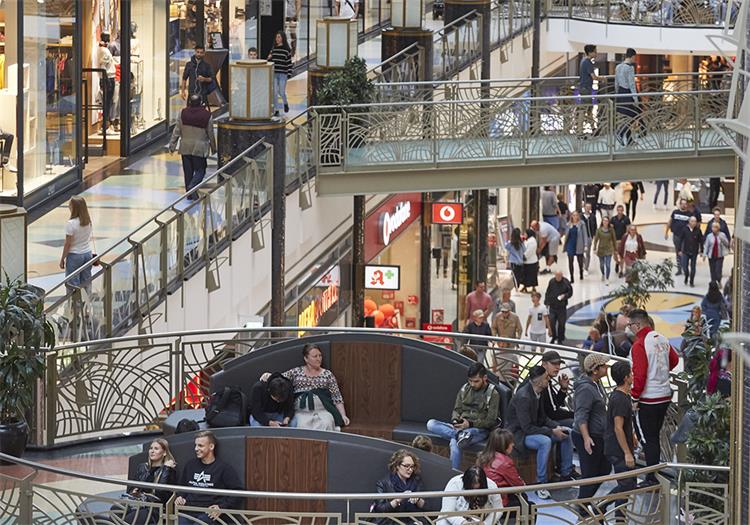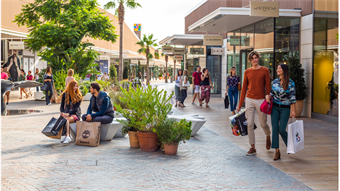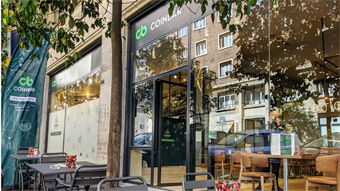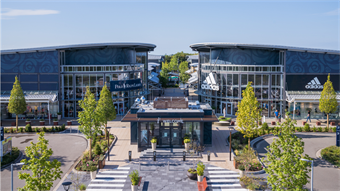Refurbishment and expansion is how we increase asset value
- In Strategy
- 22:27, 12 November 2018
- 1930 Views

Sonae Sierra has established a successful template transforming retail centres into modern, vibrant mixed-use destinations demanded by today’s shoppers.
The ongoing modernisation, adaptation, and expansion of shopping centres is mandatory nowadays for owners and operators across the sector. Continuously evolving consumer demand requires a flexible and responsive approach from industry players to create fresh concepts and experiences. This has the effect of both defending and enhancing asset value, while driving new reasons to visit existing shopping centres.
Transforming shopping concepts is in Sonae Sierra’s DNA. This can be seen both across our own portfolio of shopping centres, as well as with client projects. We see design and architecture as a crucial link in the value chain, employing a range of services from our expert teams to achieve the ideal transformation.
From a point of view of Investment Management, refurbishments often entail a significant injection of capital but are fundamental to the life of a centre. Good Investment Management therefore requires the identification of value creation opportunities, such as centre modernisations, plus their efficient execution to keep shopping centres attractive and profitable.
Initial considerations
Modernisations and adaptions can range from ambitious extensions, attracting new tenants and concepts while adding car parking space or even fusing with transport hubs, to the remodelling of internal and external areas. These can involve reorganising shared space or the shifting and expansion of individual units to achieve the desired mix and layout.
Refurbishments and expansions must also take into consideration how the industry is evolving, with the growth of leisure concepts and experiential shopping trips driving a good deal of new thinking across the sector.
An important ongoing trend has seen the transformation of food and beverage (F&B) areas into key resources for creating value for tenants and shopping centre owners. This has led Sonae Sierra to develop third generation food court concepts in many of its centres, which attract more visitors and clients, generating higher spending and ultimately translating into superior sales and rents.
Serving tenants and customers
The right refurbishment or extension can also create exciting new public spaces to inject a centre with renewed dynamism, ranging from venues for events and street markets, or space for flash stores, seasonal promotions, sampling and sponsorship opportunities.
Elsewhere, shopping centres which have strongly defined links to their locations have an increasingly important place in the communities they serve. Themed shopping centres reflect regional differences and reinforce local identities, while being acutely in touch with the needs of consumers. Exceptional architectural concepts are the baseline of these stand-out projects, creating differentiation and a fierce sense of loyalty.
Starting the process
During the initial phases, Property Management and Investment Management are the first to get involved in detecting the need for a refurbishment to contribute to value creation and to improve the shopping centre, by adapting to new consumer trends and improving the customer’s experience.
This activity is backed by an accurate and considered series of market studies, to determine aspects such as product features, centre and unit dimensioning, rent values, plus a performance impact study to analyse the cost effectiveness of the centre remodelling.
After this opportunity is identified, our experienced Development team steps in with its architectural and engineering department for the creation of a concept and a layout that permits Investment Management to move forward with the investment approval.
Design is crucial
The architects in our Development team draft the centre’s layout design and explore the concept design and schematic design before producing a detailed design. Special areas such as food courts and toilets are drawn into the plan, while the final centre graphics and way-finding designs round off the process.
The Engineering approach builds on the considerations made by the Architectural team. It necessarily involves a careful costing of the works, as well as a full engineering design study. At this stage, the shopping centre’s structure, mechanical and electric aspects, security, sound and lighting are all taken into consideration. Engineering must also conduct traffic studies to make sure that the transformed centre will be fit for purpose.
Execution phase
Sonae Sierra’s Project and Development Management experts in articulation with Property Management team ensure that the rebuilding phase goes smoothly, keeping the project to cost and on time. An outstanding characteristic of Sonae Sierra’s centre transformations is that we never cease the operation of the centre while a refurbishment or expansion is taking place, and hence the visitor experience is almost never impacted.
During the execution phase, Sonae Sierra’s leasing specialists work on designing and capturing the best new tenant mix for the centre which is defined prior the execution phase. In recent years, as we have seen, this has often involved a renewed attention to F&B areas, leisure and services options, reflecting the ways that modern consumers like to spend their time and representing essential drivers for the creation of shopping destinations.
This is perfectly illustrated by our recent refurbishment of Alexa, our shopping centre located in the historic centre of Berlin, which is owned by Union Investment and Sonae Sierra and managed by Sonae Sierra.
Transformation of Alexa in Berlin
Since its opening in September 2007, the Alexa shopping centre (pictured top) has become a magnet for customers from across the city of Berlin and beyond. It currently boasts over 170 shops, including 19 restaurants in the food hall and 18 housed in railway arches, across a total gross leasable area (GLA) of more than 56,000 m2.
This leisure and retail centre, which is named after its location on Alexanderplatz, the iconic square at the heart of Berlin, is open Monday to Saturday from 10am to 9pm, offering visitors a wide variety of shopping and leisure activities.
To mark 10 years since Alexa’s opening, owners Union Investment and Sonae Sierra began a complete modernisation of the iconic Berlin shopping destination in 2017. The reopening of the food hall on 28 September marked the completion of this renovation and the opening of a new world of shopping at Alexa.
The renovation of the 56,000 m2 (GLA) shopping centre included changes to the retail offer, now organised in new clusters, a new food hall and brand-new shop concepts that lead the way for the industry. Indeed, its revitalisation is an illustration of how shopping centres need to evolve and create the essential elements for a contemporary shopping experience.
Enhancing shopping experience
With four new retail clusters, the centre aims to make it easier for customers to find their way. The Fashion à la Carte, Sports Zone, Decoration & More and Food Hall areas were all reorganised into clusters and expanded. Around 110 shops modernised their premises or moved within the centre to achieve this rearrangement.
The goal of the cluster system is to further increase footfall and revenue, while the new design and lighting perfectly fits the cluster theme and directs the flow around the visit.
Enlarged and modernised food hall
Gastronomic offers are a key part of the modern shopping experience, and are proving to be an increasingly important element in Sonae Sierra shopping centres. The food hall at Alexa was transformed into an appealing focus point for the entire centre.
This required a complete modernisation – in fact the food hall has grown to 1,300 m2 and now includes several new units. The number of seats has increased from 500 to 720, while a total of 19 gastronomic units invite customers to take a break and enjoy a meal in a new environment.
Leasing campaign attracts 20 new tenants
A central element of the revitalisation of the centre was a major leasing campaign that attracted 20 new shops within the last year. Several young brands, including Onygo, Def Shop, Yargici and O Bag, ensure that Alexa now has one of the widest selections of young fashion stores in Germany. Other new stores include Intimissimi, Ecco, Søstrene Grene, Blue Tomato, Snipes, Miniso, Wellensteyn, Marc O’Polo and Kusmi Tea.
Alexa also uses creative retail concepts to offer attractive shopping experiences and attract new target groups. In September, for example, the online fashion label Lesara opened its first offline store at Alexa after winning the ‘First Store by Alexa Vol. II’ competition.
Alexa is also home to sports retailer Intersport’s Future Store with numerous digital features and a total floorspace of 1,300 m2. The new Zara store is with more than 2,500 m2 the fashion chain’s largest in Berlin and the first to offer self-checkouts in Germany.
Setting the stage
The Alexa refurbishment has highlighted the centre’s relevance as a stage for important city events, and the centre continues to use celebrity appearances to boost footfall and customer loyalty. Highlights in recent years have included Rihanna, the Backstreet Boys, 50 Cent and David Beckham, along with German singer Helene Fischer and fashion designer Guido Maria Kretschmer.
Overall, with this modernisation, our aim was to further strengthen the position of Alexa as an international pioneer in the sector and the place to be for both tourists and the people of Berlin. We are convinced that this renovation will see Alexa’s success story continue through the next decade and beyond.
Main image: Alexa in berlin has been modernised to take account of today’s retail trends






